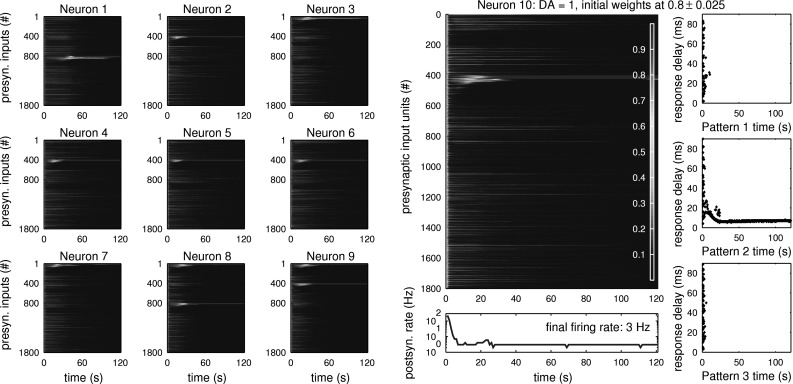Fig. 7.

Development of baseline weights: Unsupervised learning of structured input patterns by 10 independent postsynaptic neurons at baseline DA levels (DA = 1). Given equal inputs (see Fig. 5a) and a narrow range of starting weights, the 10 neurons tune to different patterns. The slight preference for choosing pattern 2 here comes from the coincident timing of the equal background inputs, and different random background inputs lead to a different pattern preference. Here, all connections start with strong weights around 0.8, leading to an initial overall decrease due to high postsynaptic activity and the asymmetry of the STDP rule. Then, as only the time-structured inputs repeatedly cause the postsynaptic neuron to fire, the weights of the connections to input units reliably firing just before postsynaptic activation begin to be strengthened. As the now stronger weights (shown in Red) lead to an earlier onset of firing of the postsynaptic neuron relative to pattern presentation times, connections to even earlier firing input units are strengthened. The earliest firing units of a repeating pattern soon form the strongest connection, as seen by the rise of red lines in the weight development plots. Also, connections to input units representing a late part of a pattern are now weakened, because they repeatedly fire after a postsynaptic spike. Far Right Input response delay plots for each of the three patterns show an initially decreasing and then constant delay of the postsynaptic neuron’s response to learnt pattern 2, and an extinction of responses to patterns 1 and 3, to which the neuron did not tune. Bottom Right Instantaneous firing rate of postsynaptic model neuron
